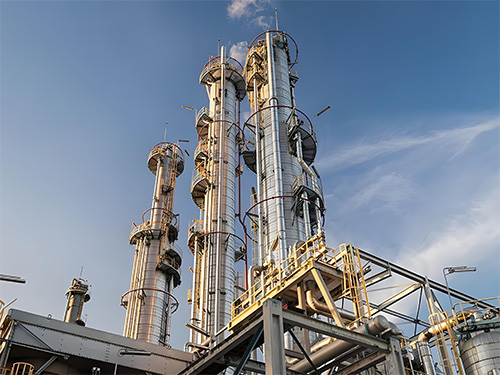
In the petrochemical industry, wax oil hydrodewaxing equipment is crucial for removing wax content from wax oil to enhance product quality and performance. With increasingly stringent environmental standards and growing production demands, selecting efficient wax oil hydrodewaxing equipment is more important than ever. This article will provide detailed guidance on choosing high-efficiency wax oil hydrodewaxing equipment to help businesses make informed decisions.

I. Understanding the Basic Functions of Wax Oil Hydrodewaxing Equipment
The primary function of wax oil hydrodewaxing equipment is to remove wax and other impurities from wax oil through a hydrogenation reaction. The equipment typically involves the following key steps:
1.Raw Material Pretreatment: Remove solid particles and moisture from the wax oil to ensure a smooth hydrogenation reaction.
2.Hydrogenation Reaction: At high temperatures and pressures, wax oil reacts with hydrogen, using a catalyst to convert the wax into lighter hydrocarbons.
3.Separation and Recovery: Separate the mixture after the reaction, recover hydrogen, remove wax, and obtain clean wax oil.
4.Post-Treatment: Further treat the wax oil to ensure it meets quality standards.
II. Key Factors for Choosing Efficient Wax Oil Hydrodewaxing Equipment
1.Dewaxing Efficiency
High dewaxing efficiency is the primary consideration when choosing equipment. Efficient equipment can significantly reduce wax content and improve product purity and performance. Choosing equipment with high dewaxing efficiency ensures compliance with strict environmental standards and product requirements.
2.Energy Consumption Level
Low-energy consumption equipment reduces production costs and minimizes environmental impact. Selecting wax oil hydrodewaxing equipment with energy-saving designs ensures high dewaxing efficiency while optimizing energy use and improving economic benefits.
3.Catalyst Performance
The catalyst is a core component in the hydrodewaxing process. High-quality catalysts enhance reaction efficiency and extend service life. Choosing equipment with superior catalyst performance can reduce replacement frequency and lower maintenance costs.
4.Automation Control
Automation control systems monitor and adjust equipment operating conditions in real time, enhancing production stability and efficiency. Modern equipment often features advanced automation control systems, enabling precise reaction control and fault alerts.
5.Ease of Maintenance and Operation
Equipment that is easy to maintain and operate can reduce downtime and operational complexity. Choosing equipment that is simple to maintain and intuitive to operate can lower training costs and maintenance expenses, increasing production efficiency.
6.Equipment Lifespan
Long-lasting equipment reduces the need for frequent replacements and repairs, lowering long-term operating costs. Choosing durable equipment ensures high performance over extended periods.
7.Supplier Reputation
Equipment from reputable suppliers typically offers higher quality assurance and comprehensive after-sales service. When choosing equipment, consider the supplier’s market reputation, customer feedback, and technical support to ensure reliability and sustained performance.
III. How to Evaluate the Economic Benefits of the Equipment
1.Initial Investment Cost
The initial investment cost of the equipment is a crucial factor in the selection process. Choose cost-effective equipment based on your budget and needs.
2.Operating Costs
Consider operating costs, including energy consumption, catalyst replacement, and maintenance expenses, in addition to the initial investment. Selecting equipment with lower operating costs can improve overall economic efficiency.
3.Return on Investment Analysis
Conduct a return on investment analysis to evaluate the payback period and long-term economic benefits of the equipment. Efficient equipment can offer higher production capacity and lower operating costs, leading to better investment returns.
IV. Conclusion
Choosing efficient wax oil hydrodewaxing equipment is vital for enhancing production efficiency and product quality. By focusing on dewaxing efficiency, energy consumption, catalyst performance, automation control, ease of maintenance, equipment lifespan, and supplier reputation, businesses can make informed decisions that lead to efficient production and sustainable development. We hope this article provides valuable insights to help you choose the right wax oil hydrodewaxing equipment, allowing your company to stand out in a competitive market.



